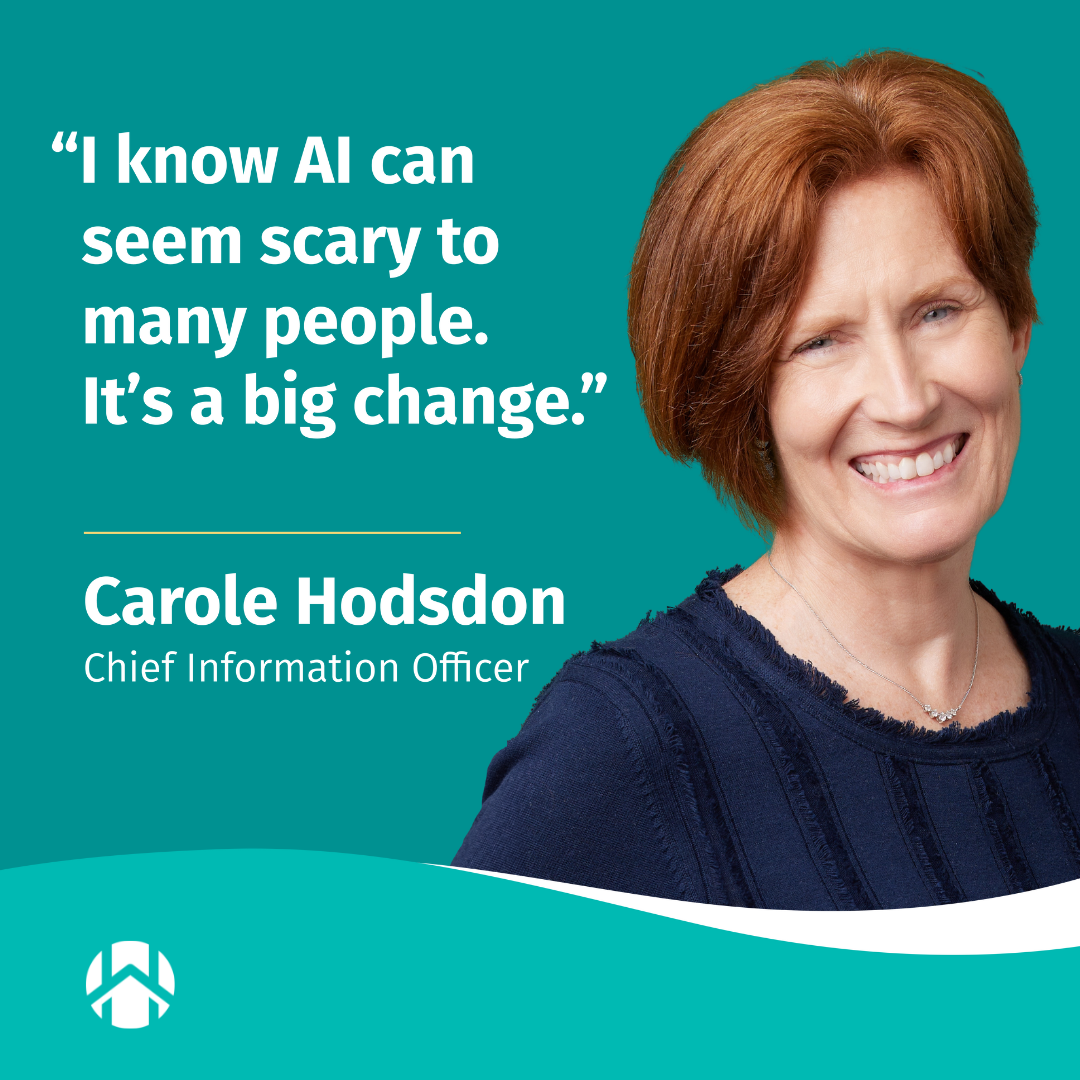In-home caregiving is personal and hands on – but technology and artificial intelligence can still drive innovation

By Carole Hodsdon, Chief Information Officer
 In-home caregiving is one of the most hands-on jobs you can imagine. In many cases, it’s as personal as helping someone into the shower or folding their laundry. It might involve making a meal for them or helping them figure out how to take a video call from their grandchildren.
In-home caregiving is one of the most hands-on jobs you can imagine. In many cases, it’s as personal as helping someone into the shower or folding their laundry. It might involve making a meal for them or helping them figure out how to take a video call from their grandchildren.
But technology – from the latest AMS systems to recruiting chatbots to state-of-the-art Artificial Intelligence – still promises to play a transformative role in making the work of our caregivers even more impactful.
As the nation’s largest home care agency – and a rapidly growing one – we hire thousands of caregivers and we are finding increasingly efficient ways to use technology to move them through the process of scheduling interviews, accepting job offers and onboarding.
Just this year, we have also made tremendous strides in standardization of our client intake process. This is a big deal for a company that has grown rapidly through acquisitions of smaller companies – each of whom had their own systems and approaches. This standardization will not only make our work more efficient – for example, making it easy to flag and assess whether we need to request another authorization for a client – but will also mean higher quality data to eventually use to train AI.
AI is going to change in the way our world works and interacts with technology.
Understand this: You need a lot of data to train AI. And unfortunately, the home care industry has not historically been a leader in quality data collection. Most in-home care agencies are small and local – without the resources to collect significant amounts of data – and certainly not to organize it in sophisticated ways.
Help at Home’s size and resources give it an opportunity to change that.
AI’s role in home care will most likely first be seen in its ability to help spot key opportunities for reassessments and interventions. In the future, AI could do this using information gathered from a sensor in the home – alerting us that someone is moving less or moving more slowly in recent weeks. It’s unlikely that AI could diagnose the cause – but it could flag the client for assessment. Are they having more trouble moving? Are they depressed? Or is it something simple – like they broke their favorite walker and no longer feel confident enough to move about.
In the nearer term, AI could fulfill that same kind of role – but with different data sources. It could evaluate data gathered from human caregivers.
AI’s first forays in home care will probably come in care coordination. Help at Home is already a leader in care coordination – which allows us to leverage the observations of our in-home caregivers by identifying areas where we can improve health outcomes. For example, in some markets our caregivers are prompted to fill out regular survey-style reports on their phones, cataloging their observations of their client.
Currently, these reports are manually reviewed by a care team – noticing that one client’s changing condition means they really need more safety equipment in the bathroom, or that another client’s increased shortness of breath should be looked at by a doctor.
Once we have enough data to train AI, our ability to flag these situations will become more sophisticated and efficient – freeing up our people to spend their time providing solutions.
I know AI can seem scary to many people. It’s a big change. And there are important questions about how we ensure that we use AI in responsible ways, respecting the privacy of our clients. But I am optimistic that we can find the right way to use these powerful new tools. With them, our caregivers will be able to make a difference on an even grander scale.
